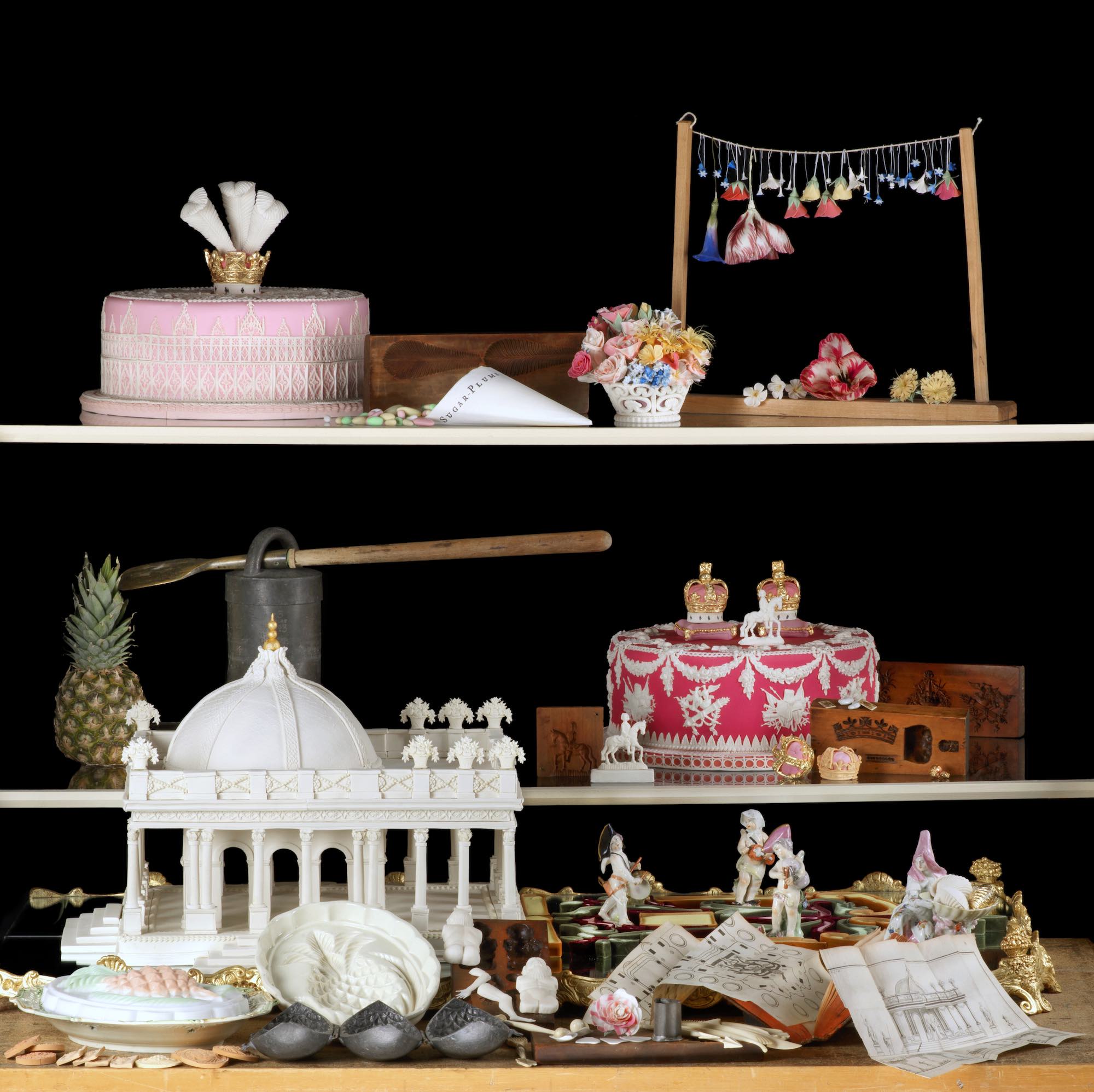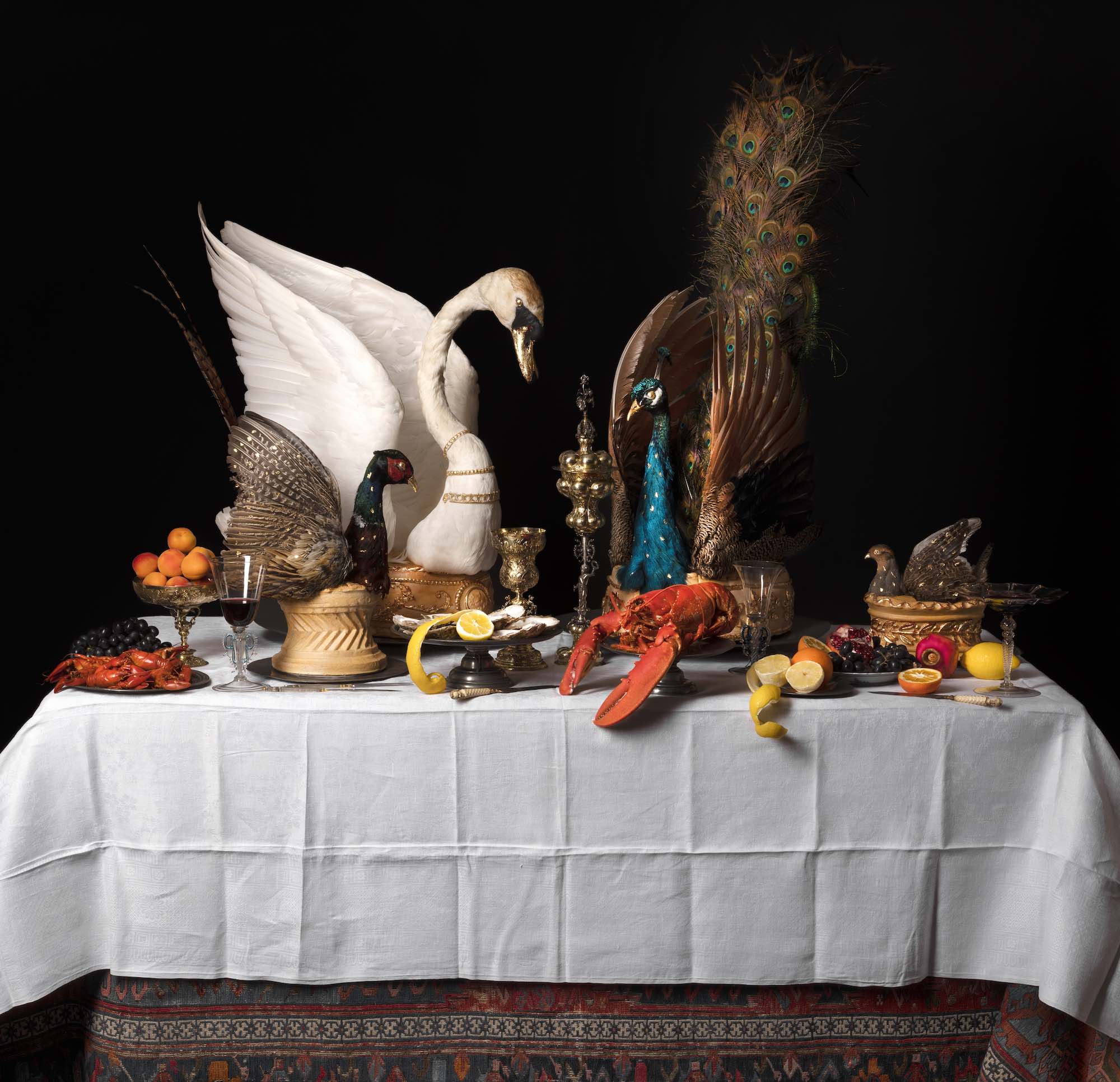About the exhibition
Fitzwilliam Museum, Cambridge | 26 November 2019 – 31 August 2020
Watch: Feast & Fast - Now open until 31st of August. Book online now!
Feast & Fast: The Art of Food in Europe, 1500-1800 is the latest interdisciplinary research-led collaboration between Victoria Avery and Melissa Calaresu of Cambridge University, together with the internationally renowned food historian, Ivan Day.
The exhibition celebrates the production, preparation, and presentation of food, its consumption or rejection, its ideologies and identities. Feast & Fast considers extremes of eating alongside everyday experiencesand demonstrates how contemporary concerns about our relationship with food are not a modern phenomenon. ‘Eating right’ in early modern Europe was as treacherous and complex an issue as making these food choices now.
Nearly 300 objects tell the compelling and complex, local and global, story of food in Cambridge, Britain, and Europe between 1500 and 1800. Many have been unseen in the Museum’s reserves for decades, and Feast & Fast provides the opportunity to research, recontextualise, and return them to the public domain, a number of which have been especially conserved for the exhibition.
Food was, and still is, a powerful source of inspiration for artists who delighted in depicting the rich colour of a pomegranate seed, the intricate form of an artichoke, and the stillness of a dead hare. The sensuality of an artist’s rendition of ripe plums partially covered in purple bloom, or the burnished scarlet carapace of a poached lobster, as in Joris van Son’s 1660 painting, serve to whet our appetite through the painter’s artful handling of different textures, forms, and reflections.
Feast & Fast will reanimate unknown and newly conserved treasures. Some of these are incorporated within three bespoke historically accurate culinary recreations brilliantly conjured up by Ivan Day. Exquisite porcelain, precious silver tableware, and delicate glassware from across Europe, including Britain, will be displayed on three visually stunning table settings, designed to delight the senses and highlight the artfulness of food itself.

Some of the most magnificent meals ever consumed in England were ‘banquets’ served at the end of elite feasts, often in specially designed banqueting houses, consisting entirely of glittering displays of sugar in different forms - sweetmeats, preserves, ornamental marzipans, sugar sculptures, and edible jokes such as a trompe l’oeil gloves, playing cards, and even a plate of bacon and eggs, all made out of sugar. Appropriately, given the Fitzwilliam Museum’s location in the heart of East Anglia, our edible sugar architectural centrepiece is a miniature version of the banqueting house at Melford Hall in Long Melford, Suffolk.

Proprietors of confectionery shops mainly created luxury provisions for the wealthy. London-based confectioners produced an extraordinary array of sweet goods, including exotic ices and a vast range of Italian and French delicacies to dress out the elaborate dessert tables of the rich. Many confectionery shops were run like cafés where customers could drop in and enjoy a syllabub, some fresh strawberries, or a paper cone of sugar plums at the counter, but they also sold or hired out porcelain tableware and glassware to create ‘furnished entertainments’. The front of this recreation shows a typical confectionery shop window, with sweet treats, alongside upmarket glass and porcelain, while the back of the display recreates the table of a busy confectioner, full of the typical tools, moulds, and books of the trade.

Baroque depictions of food focused on abundance, temptation and carnality as seen in van Son’s luxurious Still-life with a Lobster and Frans Francken the Younger’s orgiastic Worship of the Golden Calf, both in the Fitz’s collection and recently conserved for Feast & Fast. Elite dining at this period was an opportunity for a host to display wealth, status and power with the variety and rareness of the dishes, as well as the quality of tableware used. Tables displayed a plethora of game, fish, fruit, and vegetables, including elaborate pies, often gilded, and crowned with high status hunted birds such as swans, pheasants, partridges, and peacocks. While perhaps incredible - and indeed, offensive - to modern eyes, all of these birds and beasts were available for consumption by wealthy diners across early modern Europe, as made evident in Frans Snyders gigantic workshop copy of The Fowl Market, also especially conserved for this show.
Luke Syson, Director and Marlay Curator of the Fitzwilliam Museum, comments:
By focusing on food in the early modern period, Feast & Fast will, I hope, stimulate readers and visitors to think more about how we consider and engage with food now. The issues are legion and they all have historic roots, or at least precedents. The objects and works of art discussed here anticipate the desired impact of artful plating in upmarket restaurants and the carefully calculated design of eating spaces, public and private. The allure of food magazines and luscious food photography, the cult of celebrity chefs, the publication of new diets, and the concerns overeating disorders and food-related diseases, are anticipated in the sixteenth, seventeenth and eighteenth centuries. So, too, are the debates around vegetarianism and veganism, the desirability of the seasonal and local, versus the exotic and imported, the vulnerability of food supply chains, the ethics of food production, and sustainability. All of these urgent contemporary concerns have their parallels in the period of early modern food culture tackled by Feast & Fast. We stand to learn a lot.
Rarely seen treasures drawn from collections across Cambridge will be on display, including significant loans from the University’s Library, five Colleges, Wisbech & Fenland Museum and Holkham Hall. An impressive selection of the most important early modern English cookery books will be brought together, and a spectacular assemblage of Cambridge Renaissance silver tableware will be reunited for the first time in 500 years from two rival Colleges, Corpus Christi and Gonville and Caius.

The pineapple is an essential motif of the exhibition. Its production and culinary uses as well as its artistic and cultural resonances are explored in a dedicated display. It was an emblem of power, hospitality, and innovation and continues to attract interest from plant scientists, historians, and artists. Its ‘discovery’ by European colonisers in the late fifteenth century and its trajectory around the world, from an object of luxury and horticultural innovation in the early modern period to an everyday food in a can and emblem of the fair-trade movement today, is one of the central stories of early modern globalisation. Its unique taste inspired monarchs and popes to spend fortunes cultivating its fruit and, by the eighteenth century, it had become the symbol of luxury and a staple of high-end confectioners’ shops.
The pineapple also has an important connection to the Fitzwilliam Museum. Matthew Decker, a wealthy Dutch merchant and grandfather of its founder, Richard Viscount Fitzwilliam, grew the first commercially viable crop of pineapples in Britain. Decker was so pleased with this horticultural triumph that he commissioned Theodore Netscher in 1720 to paint the ‘portrait’ of a fully-grown pineapple flourishing in an English landscape rather than a tropical Eden.
This botanical feat was widely publicised by Decker’s friend, Richard Bradley, the first Professor of Botany at Cambridge University. To commemorate this link and to celebrate this tercentenary, the Botanical Garden is especially growing some pineapple specimens during the run of the show. This tercentenary will also be commemorated by the art installation of a giant multi-sensory pineapple by contemporary artists Bompas & Parr on the front lawn of the Fitz.
As exhibition curators, Victoria Avery and Melissa Calaresu said:
Food is everywhere in current cultural and political debates. The threat of the devastation of climate change has brought an increasing focus on global food security. Many people are turning to vegetarianism and veganism as a political choice as much as a dietary one, as we rethink our relationship with animals and their treatment in an industrialised world. Food choices are not only determined by political concerns about what we eat but also compounded by the moral anxieties which resonate around diet, self-image, over-consumption, and our bodies. As Feast & Fast demonstrates, many of these contemporary concerns about our relationship with food are not new.






